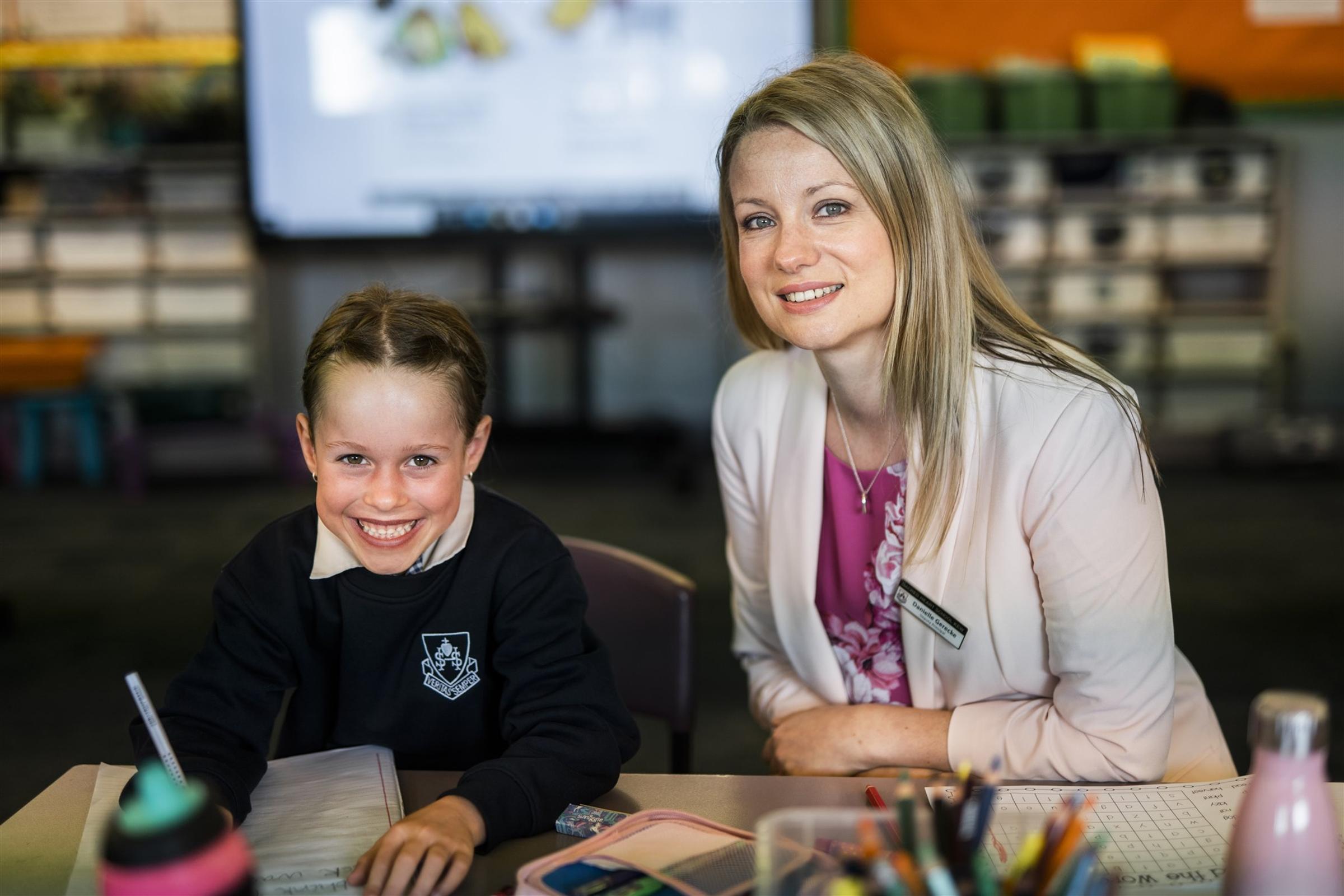Deputy Principal

Welcome back to 2022! It has been wonderful seeing the children settle into their new class and back into the school routine. Our school psychologist, Daniela Wingrave (CatholicCare), has provided some tips to support you and your child if they are feeling anxious about returning to school.
Teaching self-regulation for anxious kids
It’s completely normal for children to experience heightened emotions at the start of a school year or during any significant changes in their routine.
Teaching children to self-regulate their emotions is an important life skill which can help them identify and understand their emotions, and also manage them effectively.
If you notice your child is struggling to cope with their emotions, here are five practical ways you can support the development of self-regulation in your child.
1. Help identify and name feelings
Help your child name their feelings by giving them a label (e.g. sad, worried, or angry). You can help your child identify their feelings by describing how you would feel in their situation – “I would feel angry if Annie took my toy. Do you think you’re feeling angry right now?” Start with basic emotions which are easiest to comprehend, then once your child becomes familiar with these you can help identify more complex levels of each emotion. For example, anger is a basic emotion, but upset, frustrated, and furious are more complex descriptors of the level of anger we may experience.
Naming feelings is integral in helping children learn to identify them. Not only does it allow your child to develop vocabulary so they can talk about their feelings, but it also creates a starting point to explore the root of the problem.
2. Model ways to deal with strong emotions positively
Children develop self-regulation through warm and responsive relationships, and by watching those around them. Use organic opportunities to model how to manage strong emotions in positive and constructive ways. For example, how you can complete a frustrating task without becoming upset. In this scenario you might say something like “That was really difficult and I was feeling frustrated, but I kept trying and I got there in the end”.
If you use deep breathing or other coping strategies, model these both when you’re struggling with difficult emotions AND when your child is too. Here’s a great video showing how one mum models coping strategies for her child: https://www.tiktok.com/@katyrobinbird/video/6954411522764393733
3. Offer a toolbox of coping strategies
What works for one person doesn’t work for everyone. Teach and model to your child a range of different coping strategies, so that they can experiment with each and find the ones that work best for them.
Some examples of coping strategies include:
- Physical tools (e.g. walking, stretching, jumping jacks)
- Thinking tools (e.g. coping statements, positive self-talk, mindfulness, affirmations)
- Social tools (e.g. connecting with a friend or trusted adult)
- Relaxing tools (e.g. yoga, meditation, visual imagery)
- Creative tools (e.g. drawing, painting, journaling)
4. Support with problem solving if needed
It is often difficult to solve a problem when experiencing strong emotions. Once your child is feeling calm and safe after using a coping strategy of their choice, this is now a good opportunity to problem solve. You can encourage your child to problem solve on their own, or ask if they need some support. For example: “What could you do next time when Annie wants to play with the toy you’re playing with?” “Do you want my advice?”
Give every opportunity for your child to learn and problem solve on their own, and respect their decision if they don’t want your advice. Just let them know that you’re there to help if and when they need it.
5. Show empathy, encouragement, and praise
Self-regulating emotions takes a lot of practice, just like learning to walk! It is important that your child feels cared about, valued, and understood as they learn to regulate. Expect setbacks in their learning and growth, too – some challenges will be more difficult than others and that’s okay.
Make sure to praise your child when they talk about their feelings or express them in an appropriate way. Not only does it help to normalize feeling and create a safe context to talk about them, it also reinforces this behaviour so they are likely to repeat it.
Children who are able to identify, express and manage their emotions effectively are more likely to experience an array of long-term benefits to their mental health and wellbeing.
These benefits include better school and career outcomes, more positive and stable relationships, behaving in socially acceptable ways, greater resilience and coping skills, and a positive sense of self.
To learn more about coping strategies for kids, check out the websites below!
